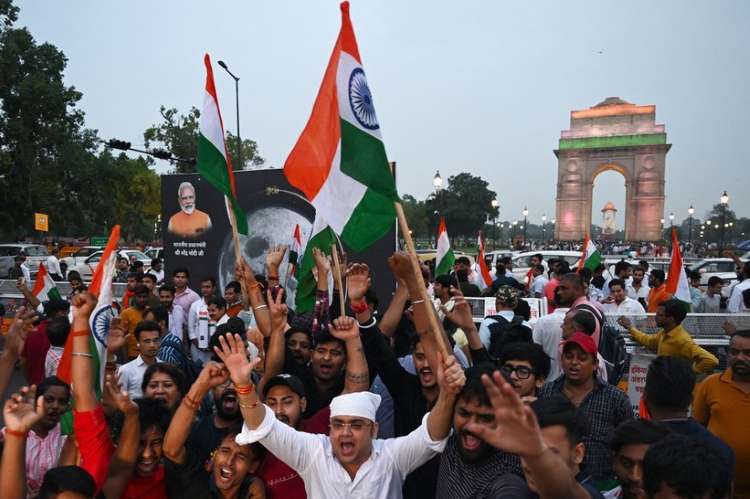
The logic and illogic of India-Pakistan conflicts: India and Pakistan are like estranged siblings, condemned to share a history neither can forget nor forgive. Born of a bloody Partition that claimed over a million lives and displaced many millions more, both nations have weaponised memory and grievance to entrench their sense of victimhood and righteousness. That shared past—of betrayal, trauma, and unfinished borders—remains the single greatest obstacle to peace. It anchors the present in permanent mistrust, rendering logical diplomacy a futile exercise.
Kashmir, the spark for every major conflagration since 1947, remains a festering wound. The result is three wars, frequent skirmishes, and the ever-present spectre of nuclear annihilation. No amount of high-level dialogue or backchannel talks can override the foundational narratives upon which both states were built.
READ I Modern wars and narratives: Inflation and information are redefining conflict
Populism and India-Pakistan conflicts
It is tempting to seek rational explanations for irrational escalations. But logic rarely finds a seat at the table when political populism calls the shots.
Pakistan has long allowed its military to thrive on the myth of being the Islamic world’s only nuclear power—capable, if needed, of standing up to India. General Asim Munir’s statements about Kashmir being Pakistan’s jugular vein and his calls to arms were not strategic calculations but populist theatre. The Pakistani army, deeply unpopular due to economic mismanagement, corruption, and repression, found in the Indian strikes a convenient foil to rally public sentiment and reaffirm its dominance.
The Pakistani military has always maintained a stranglehold on civilian governance. Yet, public opinion in Pakistan is not irrelevant. Each Indian strike that humiliates the Pakistani army—if it spares civilian lives—chips away at the myth of military invincibility. The path to neutralising Pakistan’s threat runs not through escalation, but through selective de-escalation. Every time India closes its hospitals to Pakistani patients or threatens to weaponise water from the Indus, it inadvertently unites the Pakistani public behind its army.

All Indian prime ministers have used anti-Pakistan rhetoric ahead of elections to garner support. No wonder, Prime Minister Narendra Modi, who faced a setback in the 2024 general elections, leaned once again on muscular nationalism to galvanise support. His response to the Pahalgam massacre, though framed as limited and strategic, was calibrated to play to domestic passions.
Since both countries became nuclear powers, deterrence has held—barely. The 2019 Balakot-Pulwama episode saw surgical strikes, the loss of a pilot, and a quick de-escalation. The current round, however, is more perilous. India’s strikes targeted locations in Pakistani Punjab—a move not seen since the 1971 war. Pakistan’s retaliation also was unprecedented in scale.
Herein lies the danger. Nuclear deterrence rests on rational actors making rational decisions. But nationalist fervour, media pressure, and social media-fuelled rage often override strategic caution. This conflict was an acid test for the logic of nuclear deterrence.
A conflict in China’s interest
It is not Pakistan but China that poses the real strategic challenge to India. China leads the world in 57 of 64 key military and technological domains, according to the Australian Strategic Policy Institute. Yet, every time an India-Pakistan conflict flares up, and India is forced to amass troops on its western frontier, it is a welcome distraction for Beijing. Pakistan, in this geopolitical chessboard, plays the role of a willing pawn—keeping India occupied while China consolidates power in the Himalayas and the Indo-Pacific.
Beijing has supplied Pakistan with J-10 fighters, nuclear submarines, and loitering munitions. Every India-Pakistan escalation is a data point for China’s defence planners. The dogfights over Kashmir become proxy contests for its weapons systems.
India must, therefore, avoid playing into China’s hands. Constant military engagement with Pakistan is a strategic distraction and a drain on resources better spent on building deterrence along the Line of Actual Control.
No military solution to India-Pakistan conflict
To believe that India-Pakistan conflict can be settled through military means is to ignore the history of the subcontinent. As Sumit Ganguly notes in Deadly Impasse, India and Pakistan have demonstrated strategic restraint, but the conflict itself is “remarkably durable.” The tragedy lies in that durability—frozen not by military balance but by political expediency.
A return to dialogue and the revival of backchannel diplomacy are necessary. Track II diplomacy has historically helped both nations step back from the brink. Dialogue between intelligence agencies, retired diplomats, and military interlocutors has allowed de-escalation in the past.

These unofficial conduits, often more effective than formal talks, are crucial in times of inflamed public sentiment when official channels become politically risky. Reopening these backchannels is not weakness; it is the hallmark of a mature statecraft that prioritises national interest over nationalist theatrics.
Until then, this theatre of endless retaliation will continue. Politicians will win votes, generals will bask in temporary glory, and the ordinary citizen—both Indian and Pakistani—will pay the price.
Restraint is not weakness — It is power
The India-Pakistan conflict defies logic because it is not driven by logic. It is driven by history, grievance, and political opportunism. As long as that combustible mix endures, even the clearest strategic reasoning will drown in nationalist noise. And yet, it is precisely in this moment of danger that India must summon its most valuable asset: restraint.
To behave like a rising power is not merely about growing GDP figures, military prowess, or space missions. It is about conduct—measured, rational, and aligned with long-term strategic interests. India aspires to lead the Global South, to be a moral counterweight to authoritarian China, and to emerge as the preferred destination for global capital seeking an alternative to Chinese manufacturing dominance. These ambitions are incompatible with war-mongering and jingoistic retaliation.
Every strike across the border chips away at India’s carefully cultivated image as a stable democracy, open economy, and responsible power. Investors, supply chain strategists, and geopolitical partners do not gamble on volatility. They seek predictability, rule of law, and mature governance. For India to become the manufacturing hub of the world, it must offer something China cannot: not just cost efficiency, but also geopolitical reliability.
Every episode of India-Pakistan conflict diverts precious fiscal and political capital away from essential reforms. Infrastructure development, human capital investment, industrial modernisation, and clean energy transition—all suffer when the country is on a war footing. China, despite its aggression, rarely lets itself be distracted from the long game. India must do the same.
